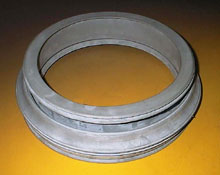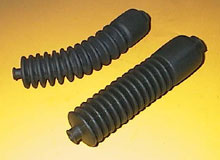The development
of blends of NR with EPDM combines the superior physical properties
and competitive price of NR with the excellent resistance to weathering,
in particular to attack by ozone of EPDM. However, NR and EPDM blends
are heterogeneous dispersion of fast curing NR phase and a slow curing
EPDM phase. The overall result is that the blend vulcanisate is composed
of overcured NR and undercured EPDM, and these would adversely affect
the properties of the blend.
In order to achieve improved co-curability throughout
the NR/EPDM blends, a procedure has been developed whereby NR is
cross-blended with a modified EPDM to give a blend which is able
to meet the above properties. The approach used is to increase the
cure rate of EPDM by modifying the EPDM phase to make it more reactive
towards curatives, using commercially available sulphur donors such
as bis-alkylphenoldisulphide (BAPD), in combination with dithiocaprolactam
(DTDC) and/or dithiomorpholine (DTDM). This approach is termed as
'reactive mixing'.
Products in general
The technology of making the NR/modified EPDM blends has been shown
to be suitable for a number of applications such as extruded profile
weatherstrips for automotive and moulded products like grommet and
washing machine gasket. These products typically use 100% EPDM,
hence, the inclusion of a certain percentage of NR would reduce
the products cost without affecting the products quality and performance.
|
|

Automotive Weatherstrips

Washing Machine Gaskets

Grommets |




